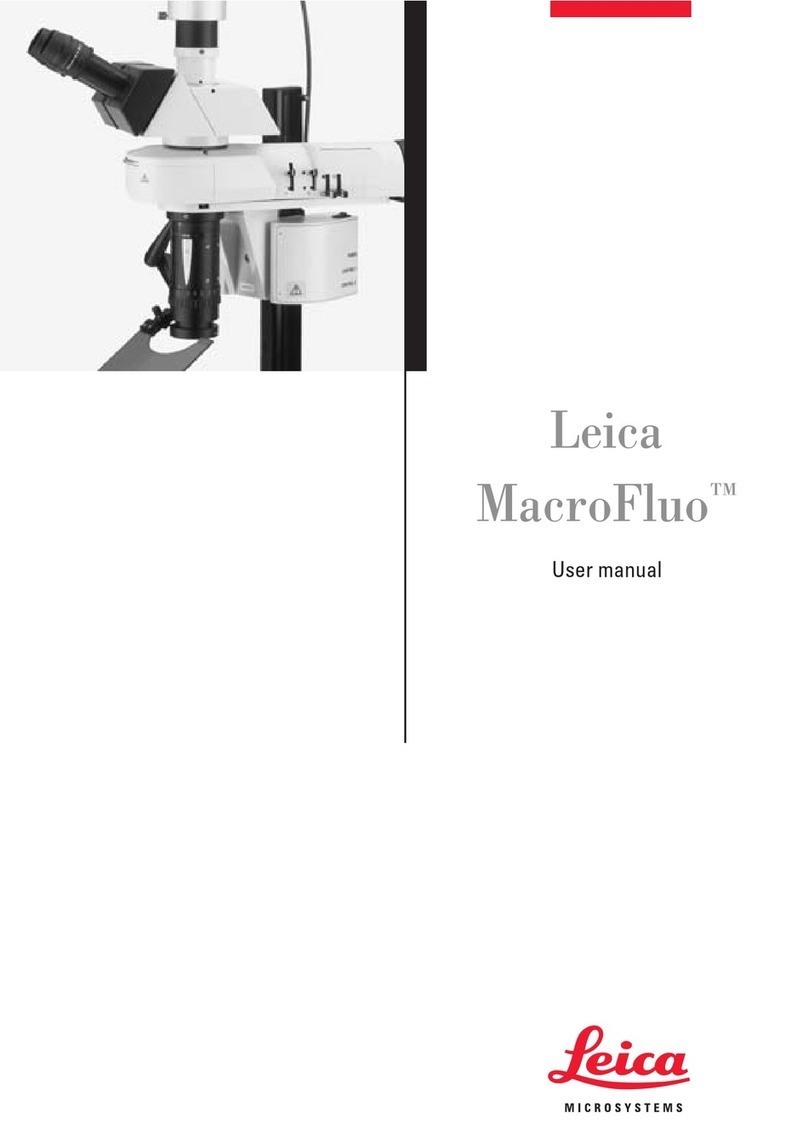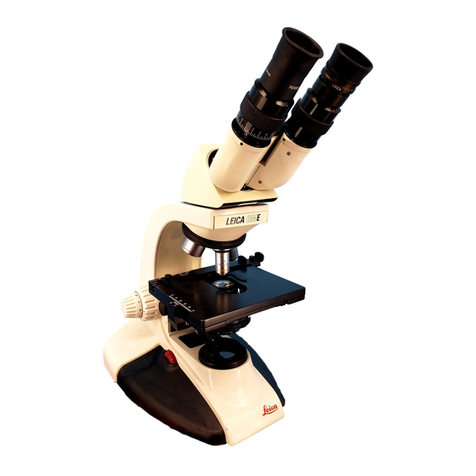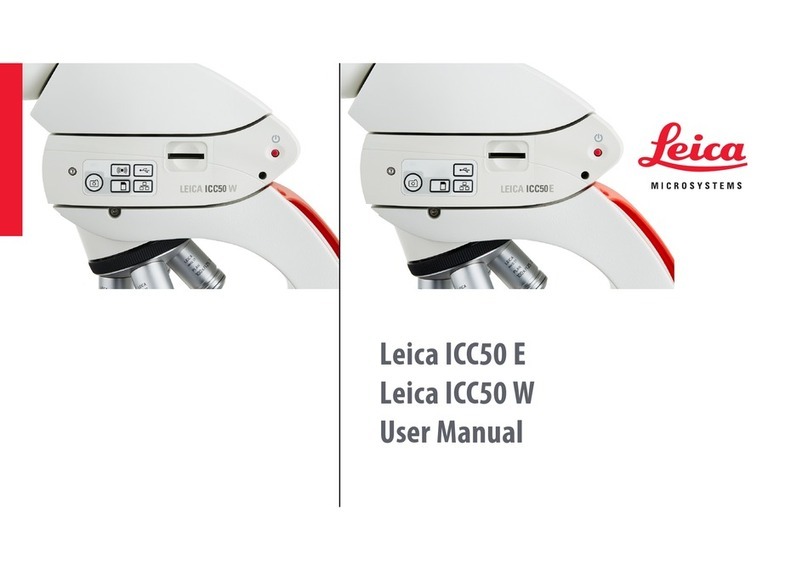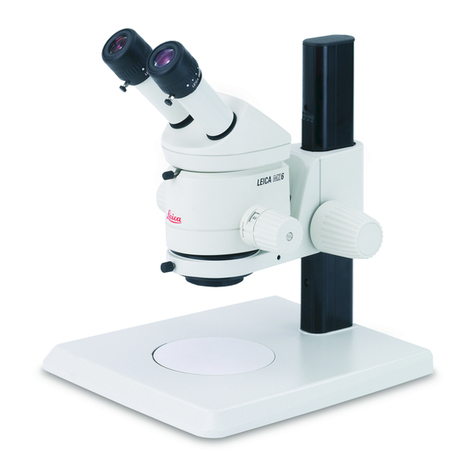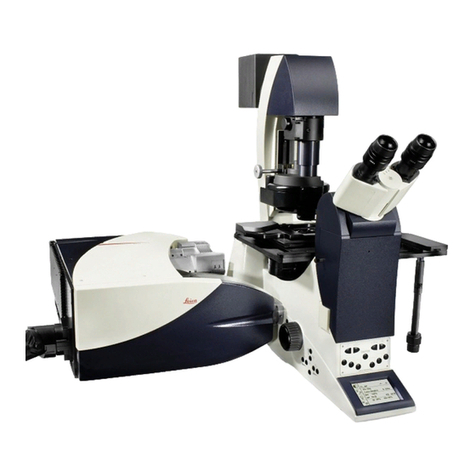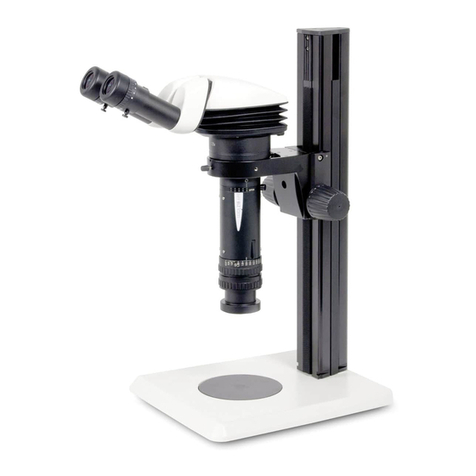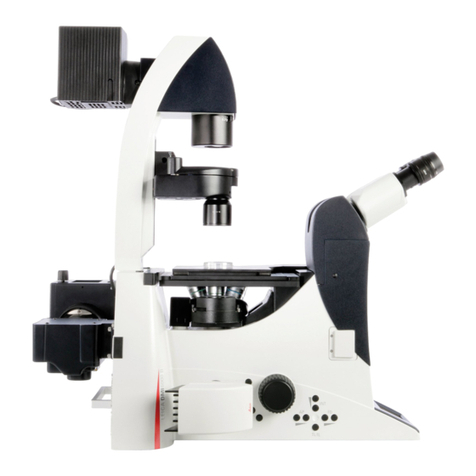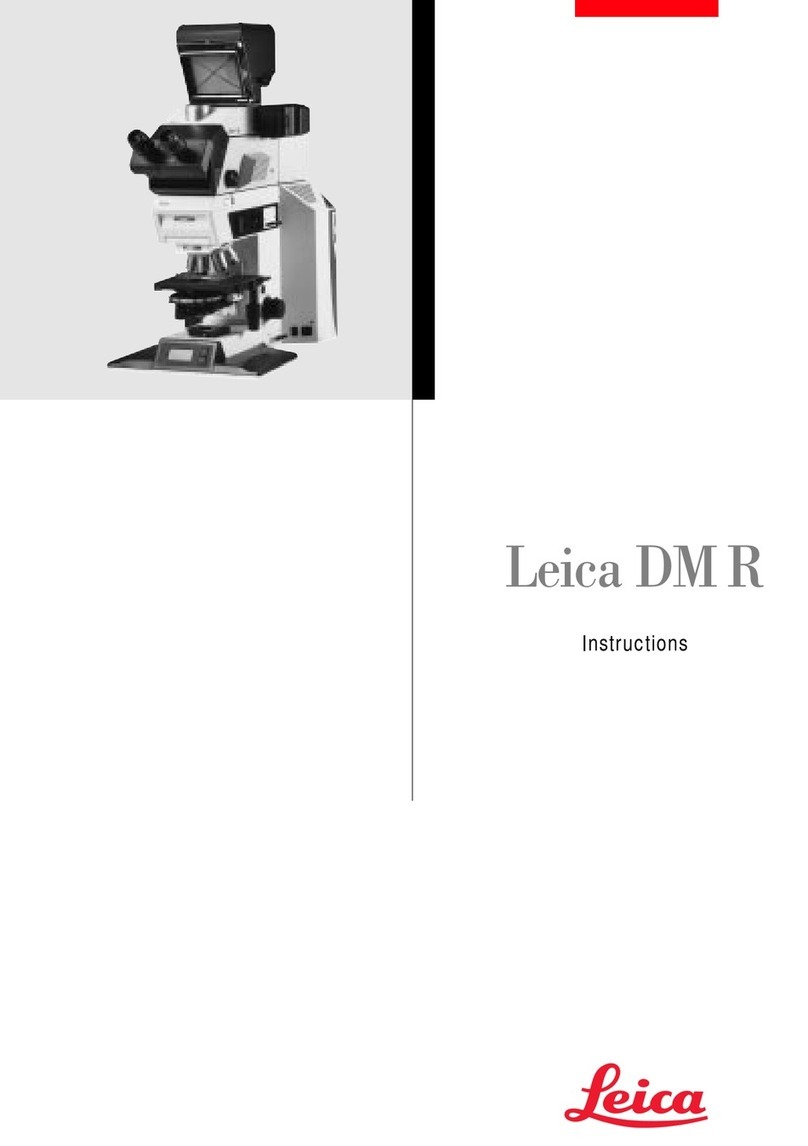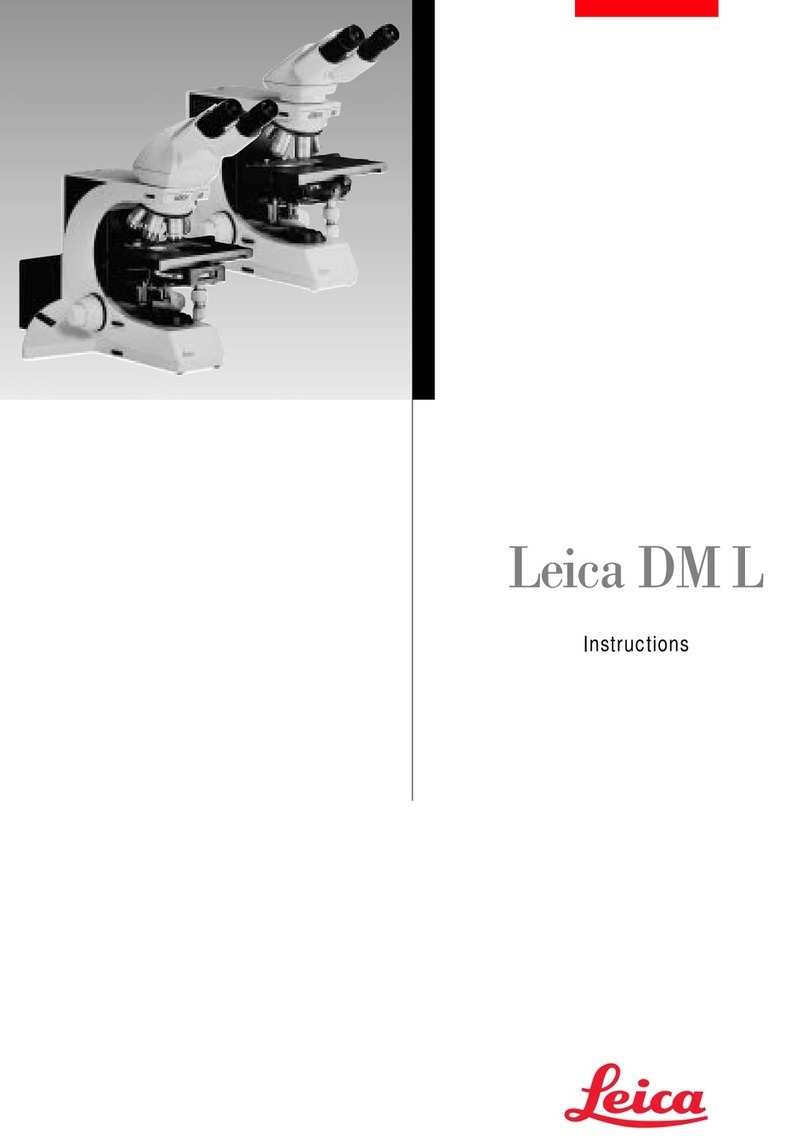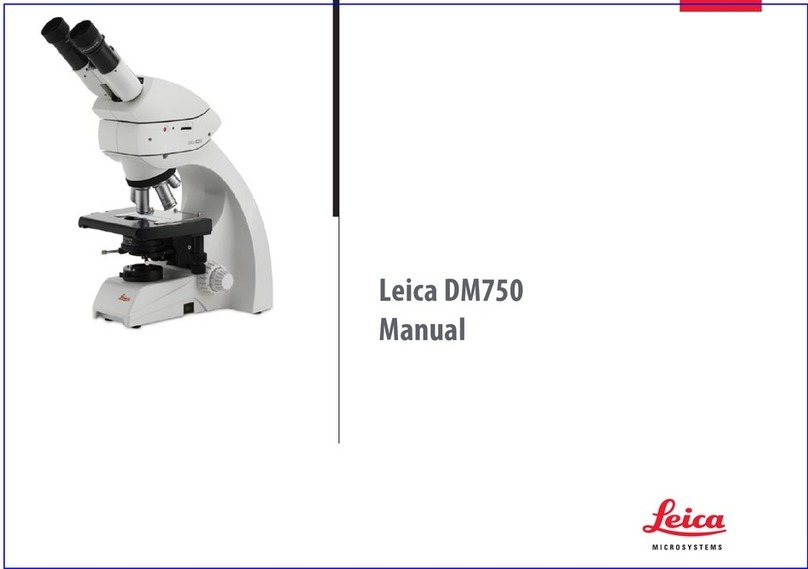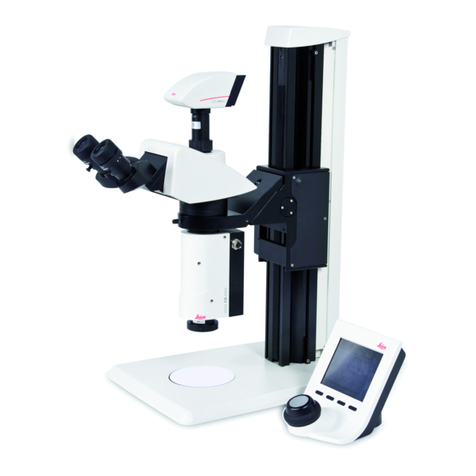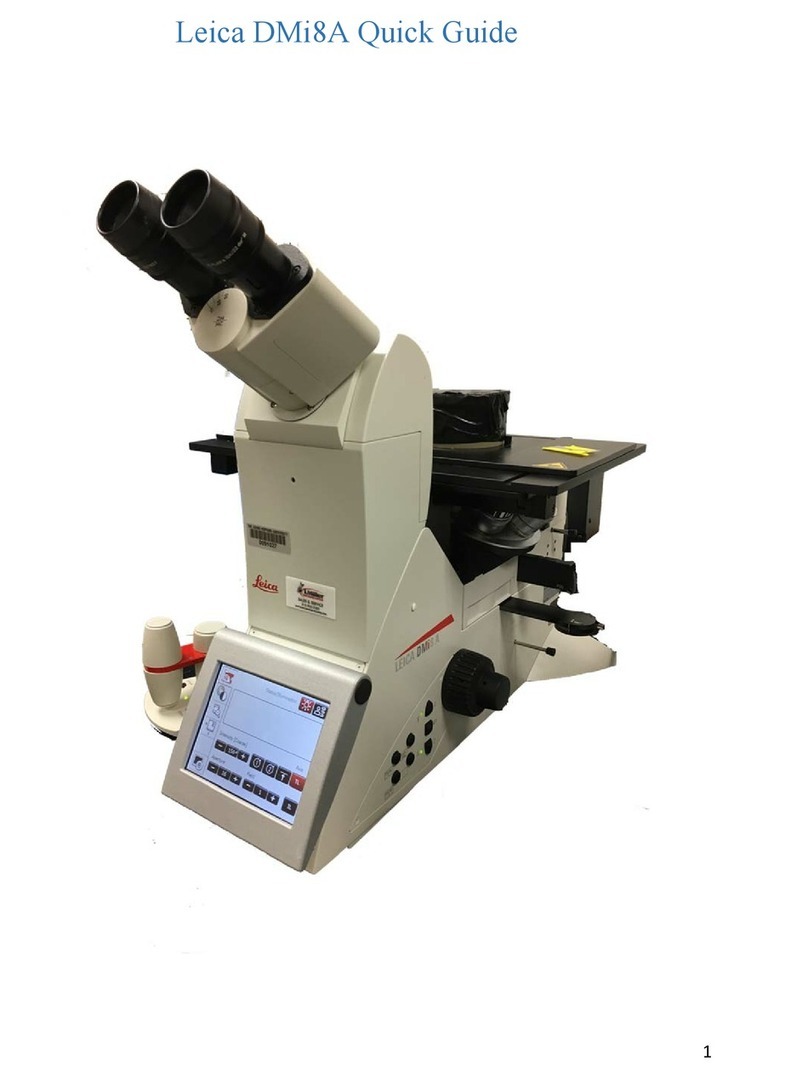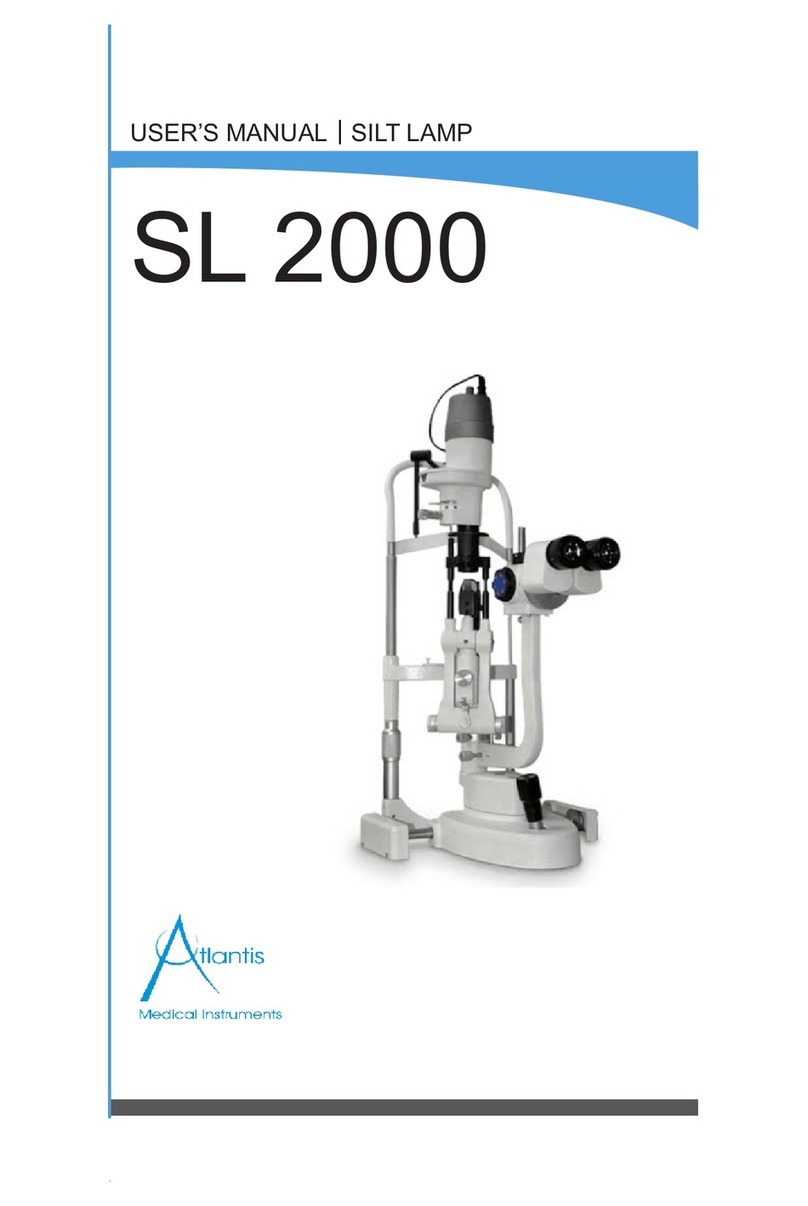
5
Contents
Contents
1. Important Notes about this Manual ...... 6
2. Safety Notes ............................................... 7
2.1. General Safety Notes ............................... 7
2.2. Electrical Safety ........................................ 7
2.3 Weights ....................................................... 7
3. Field of Application .................................. 9
4. Installation Site ......................................... 10
5. Unpacking the Macroscope ................... 11
6. Overview of the Instrument .................... 13
7. Assembly .................................................... 14
7.1 Comparison Bridge ................................... 14
7.2 Illumination ................................................. 14
7.3 Eyepieces.................................................... 18
7.4 Objectives ................................................... 18
7.5 Cabling ......................................................... 19
8. Operation .................................................... 21
8.1 Switching on the Macroscope ............... 21
8.2 Stages .......................................................... 22
8.3 Tube ............................................................ 22
8.4 Eyepieces.................................................... 23
8.5 Brightness Setting..................................... 23
8.6 Focusing ...................................................... 23
8.7 Objectives ................................................... 24
8.8 Magnification Changer............................. 24
8.9 Diaphragm Setting .................................... 24
8.10 The Smart Move Control Panel............... 25
8.11 Adjusting the Height of the Stand .......... 25
8.12 Magnification Calibration ........................ 25
8.13 Oblique Incident Illumination .................. 26
8.14 Coaxial Incident Illumination................... 26
8.15 Transmitted Light Illumination................. 28
8.16 UV Illumination ........................................... 29
9. Accessories ............................................... 30
9.1 Motorized Work Table .............................. 30
9.2 Stackable Stages ...................................... 31
9.3 Slide Holder ................................................ 33
9.4 Rotating Mechanism for
Toolmark Examination .............................. 41
9.5 Light Panel .................................................. 41
9.6 Filter for Color Contrast ............................ 42
9.7 Polarization Devices ................................. 43
9.8 Stage Scales
and Calibration Standard ......................... 44
10. Technical Data ......................................... 45
11. Care of the Comparison Macroscope .... 48
11.1 Dust Cover .................................................. 48
11.2 Cleaning....................................................... 48
11.3 Handling Acids and Alkalines ................. 49
12. Wear and Spare Parts .............................. 50
13. EU Declaration of Conformity................. 51

